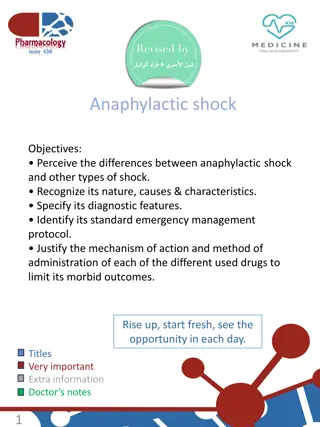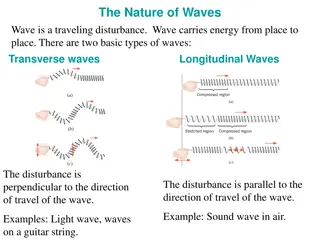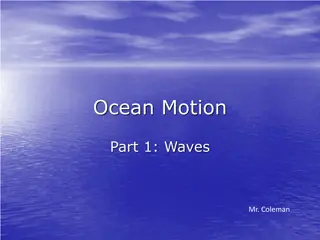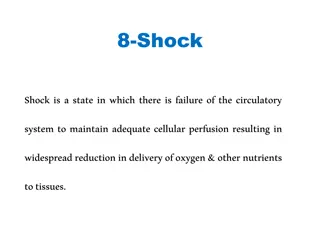Understanding Normal Shock Waves in Gas Dynamics
In gas dynamics, normal shock waves occur when there is a significant pressure difference across a compression pulse, leading to increased entropy. This results in non-isentropic flow known as compression shock waves. The formation of compression and expansion waves can be likened to piston movements, affecting temperature, pressure, and sound velocity. The properties of gas after a shock, including stagnation temperature, can be analyzed using continuity, momentum, energy, and entropy equations.
Download Presentation

Please find below an Image/Link to download the presentation.
The content on the website is provided AS IS for your information and personal use only. It may not be sold, licensed, or shared on other websites without obtaining consent from the author. Download presentation by click this link. If you encounter any issues during the download, it is possible that the publisher has removed the file from their server.
E N D
Presentation Transcript
7thlecture Normal Shock Waves A pressure difference exists across a compression pulse. When this difference is sufficiently large, there is also an increase in entropy across the pulse. The flow is no longer isentropic and the wave is called a compression shock wave.
Formation of compression and expansion waves A compression wave travelling through a gas at rest can be treated as what occurs when a piston moves inward to compress the gas until it reaches a velocity V. The velocity of the piston increases by values dV to reach the velocity V. The first increment dV, which causes increase in the temperature and pressure, causes creation of sound velocity proportion to the temperature. The second increase in the velocity of dV will increase the temperature and pressure and hence the created sound velocity will be higher than that of the first case. This process will continue in the gas column until it reaches the velocity V with the sequence of creating successive sound velocities increasing from one stage to the other because of the successive increase in the temperature and causing a steeping of the compression wave. Formation of compression wave
An expansion wave travelling through a gas at rest can be treated in a similar way, as what occurs when a piston moves outward to expand the gas. The velocity of the piston increases by values dV to reach the velocity V. The first expansion due to dV causes decrease in the temperature and pressure, causes creation of sound velocity proportion to the decrease in the velocity temperature and pressure and hence the created sound velocity will be lower than that of the first case. This process will continue in the gas column until it reaches the velocity V with the sequence of creating successive sound velocities decreasing from one stage to the other because of the successive decrease in the temperature and causing a steeping of the expansion wave. temperature. of dV The decrease second will the Unlike compression waves, successive expansion waves do not form a finite expansion shock wave. Formation of expansion wave
Consider a normal shock wave propagating adiabatically through a gas in a duct of constant cross-sectional area A, as shown in the figure. Let subscripts x and y refer to the conditions just before and just after the shock. The continuity equation applied to a control surface surrounding the shock is: Applying the momentum equation and neglecting the friction forces because the thickness of the shock is small: The energy equation is applied for adiabatic steady flow: The entropy will increase across the shock , as it is irreversible adiabatic:
Properties of gas after the shock will be derived: The stagnation temperature remains before and after the shock constant: And hence then From the continuity equation
Since a shock does not change the mass flow rate or stagnation temperature, the stagnation pressures across the shock are related to the critical areas as:
The entropy change across a normal shock is given by: From the last relation of the stagnation pressure ratio, it can be deduced that:
If the momentum equation is divided by the continuity equation we get: Substituting the last two equations:
Rankine-Hugoniot relations are plotted in the adjacent figure. Also in this figure the isentropic relation is shown. At low pressure ratios, Rankine-Hugoniot curve and the isentropic curve differ slightly from each other, so a weak shock can be treated approximately isentropic. At large pressure ratios (strong shocks), the density ratio reaches limiting value of























